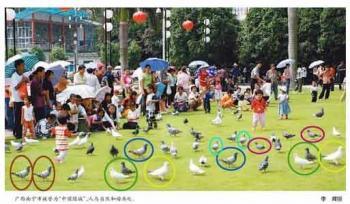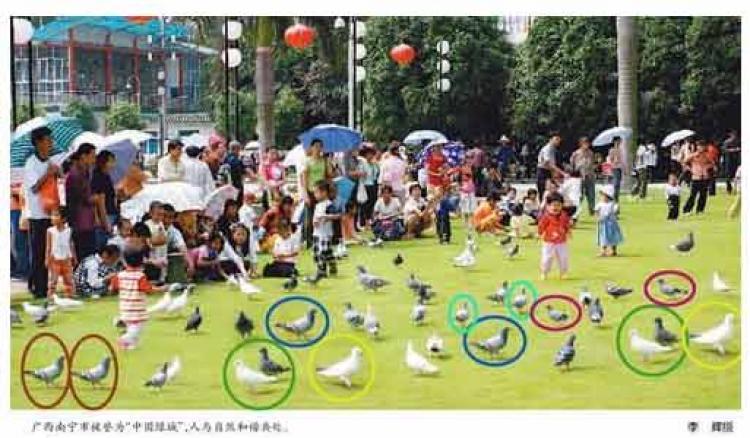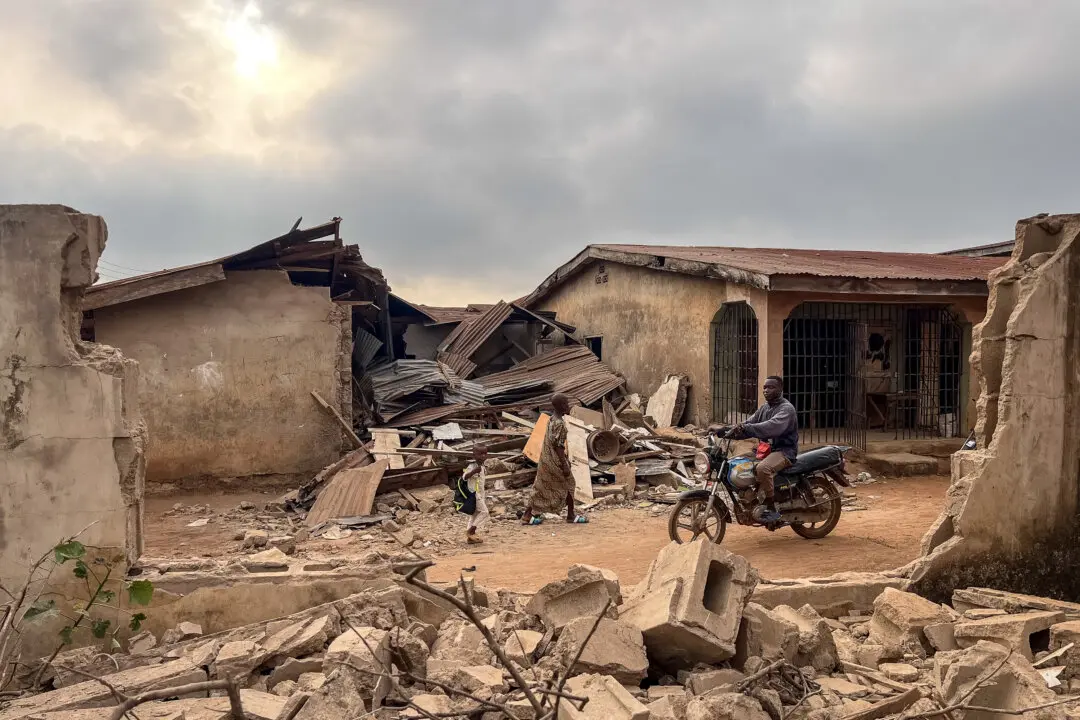Last year, in the First China International Press Photo (CHIPP) Contest, the news gold prize award winner, “Pigeons on the Square,” was judged to be fake, because one of the pigeons was created through the use of Photoshop. After being exposed through the media and over the Internet, the contest committee nullified the award. Contestant Zhang Liang later admitted to the alteration and was dismissed by the newspaper office.
Now, once again, there is a Photoshop simulation of pigeons appearing in People’s Daily. Zhang Bin, the Director of China Photographers Association, exposed the fake photo over his blog, blshe.com, on July 1. “I found that People’s Daily published an article with the coarsely edited photo on the 14th page of the paper, on June 26. It went so far as to alter six areas in the same photo….” said Zhang.
In this news photo report, there are 53 pigeons in the picture, including seven that are conspicuously fake. The caption read, “Nanning in Guangxi Province is honored as China’s green city. People live in harmony with nature.” The author is Li Hui, whose workplace was not disclosed.
Moreover, the page the photo appears on is not a regular news page, but is a “special edition,” which is used for publicizing and promoting culture and development in different parts of China.
A blogger, Ye Zhenhua, commented over Zhang Bing’s blog, “Making up photos, used for propaganda purposes, is a precious experience we learned from the Soviet Union in the 1950s. The peak of perfection was reached in the 1970s. Now all that is required is only a little more than adding finishing touches. This is how we achieve harmony.”
Another blogger, Liu Xinhong added, “Similar things happen everywhere. It just seems to be normal now.”







